View current page
...more recent posts
A couple of sentences in the post on Steven Parrino have been revised to read:
One thing's sure: if Roberta Smith of the New York Times doesn't like your work, you'd be very lucky not to have her write your obit. Her tribute [to Parrino] is how shall we say...affectless? merely descriptive? The closest it comes to a value judgment is saying the work had a "relentless if oddly energetic punk nihilism," a collection of adjectives and adverbs that give off a nice crackle but probably cancel each other out.
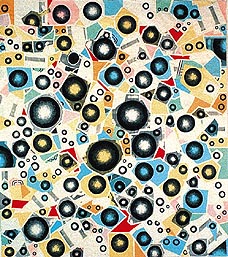
Greater (see below). This (upside down) image was saved from the website of a newspaper in Naples, FL, when the "post-hypnotic" exhibit traveled there. The review may still be up.
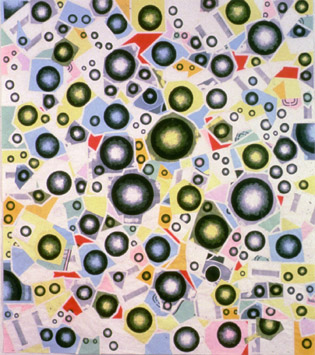
Greater, 1997, photocopies and linen tape, 88" X 78"
This slightly fuzzy image was saved from Illinois State University Galleries' "post-hypnotic" exhibition artists pages, which appear to have been taken down.
I've made a few changes to my main site page, including a new image. For years I used this installation shot of a couple of large pieces from the late 90s, but time and art march on. I had a more recent studio installation view up for a while--a semi-scatter of recent drawings--but a friend suggested it wasn't putting my best molecule forward, that it was a tentative hedge between a "messy studio" look and controlled, salon style hanging. That's probably right. Anyway, I changed the image tonight to a couple of more recent framed pieces that I guess are stronger. Sorry, I know this is boring. I also have been changing the fonts around on some of the main archive pages so they're more simpatico with this page. The overall site is really a mess now, with some pages understated*/serif and some aggressive/sans serif, a transition state from which it may never fully emerge.
*for someone at my html skill level, at least
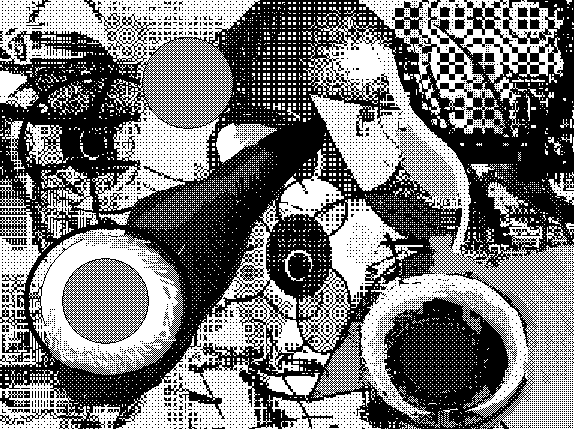
Just reading about the suicide of Arkansas heart surgeon Jonathan Drummond-Webb. His "extraordinary success rate for repairing complicated defects in [infant] hearts the size of an adult's thumb -- and his flair with patients and their families -- had made him a surgical star. He came across as a hero in a four-part prime-time ABC documentary in 2002." The AP story makes you wonder what really happened. In his suicide note he railed against his co-workers at the hospital:
The 45-year-old surgeon left a profanity-laced suicide note in which he indicated he felt his work was underappreciated and ranted about colleagues at Arkansas Children's Hospital and at the Cleveland Clinic, where he formerly worked.But when interviewed, these co-workers didn't say, "Yeah, we suck." Instead they blamed...the deceased.
"Every day my living hell!!" the scribbled note read. "These people don't care. I have a gift to save babies. The world is not ready for me."
[C]olleagues said Drummond-Webb was his own toughest critic.I'd like to read more of Drummond-Webb's "ranting" about these guys. Maybe the hospital was an emotionally toxic work environment? Newspaper stories like this are frustrating, in that the survivors get to write the script.
"Some would say they saved 98 out of 100," said Arkansas Children's Hospital chief executive Dr. Jonathan Bates. "He looked at it and said, 'I lost two out of 100.'"
Anesthesiologist Dr. Mike Schmitz said that even in Drummond-Webb's incredible achievements, the surgeon "saw his own subtle imperfections."
"I knew well that much of his angst was internal, a small voice in the back of his mind that said, 'That's not good enough: I could have done better,'" Schmitz wrote in a tribute to Drummond-Webb in the hospital's in-house magazine. "That which helped make him such a gifted surgeon was also an incredible burden; a burden that at least for a few hours one night became unbearable."
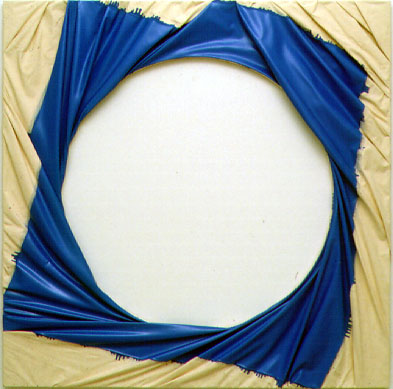
Artist Bill Schwarz, who knew the late painter Steven Parrino well, posts some thoughts and corrections of the newsprint accounts of Parrino's life and untimely passing here. One thing's sure: if Roberta Smith of the New York Times doesn't like your work, you'd be very lucky not to have her write your obit. Her tribute is how shall we say...affectless? merely descriptive? The closest it comes to a value judgment is saying the work had a "relentless if oddly energetic punk nihilism," a collection of adjectives and adverbs that give off a nice crackle but probably cancel each other out. The New York Post obit supplied the info that Parrino was "a little bit of a loner" who "didn't like crowds or parties." The police told a friend of Parrino's they believe that his motorcycle hit a pothole on Kent Ave., just a block away from his studio. In other words, an accident that could happen to anybody, especially with New York sized potholes. Yet by saying he "lost control" of his cycle "returning from a New Year's Eve party in Williamsburg," Smith creates the clear implication that...well, what does that imply to you? A journalist can be perfectly factual and still smear through the omission of detail. Thus are "bad boy" legends born, one supposes.
Bill says: "Parrino's destruction of unsold paintings has a wholly different meaning from the destructive editing activities of precedential modernists like de Kooning and Baldessari." He doesn't elaborate, but I think what he's talking about was, Baldessari famously destroyed his early, painterly paintings before embarking on his career as a conceptualist, but it's a fair guess he hasn't destroyed much since then. Whereas Parrino constantly cannibalized unsold work to make new--it was evident right there in the rubble pile at your feet. This was a very cool thing. I had a hard time with the "signature" canvases conspicuously torn off the stretcher, wadded up, and rehung--they seemed angry about something not worth getting angry about, which is to say, painting on canvas. (I'm open to having my mind changed by a retrospective.) He did do some beautiful paintings in that style, though (see above) and his career commitment to The Dark Side in his video, music and zine-making was likewise exquisite. I remember he organized some event nights at Team that included a screening of Dario Argento's Suspiria and also introduced Shell to the art world. Also very cool.
He will be missed, New York Times notwithstanding.
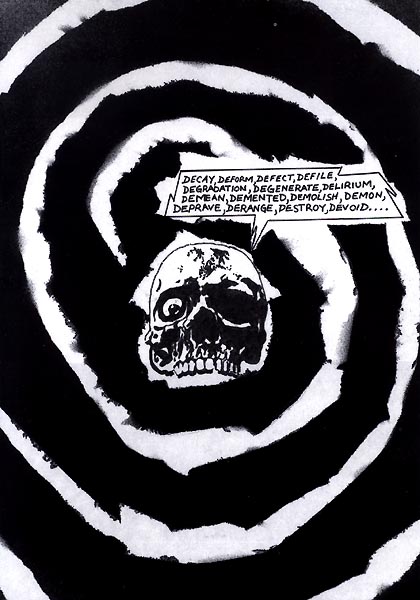
Writing about the black conservative columnist on the take from the Bush government to flak "No Child Left Behind," blogger Steve Gilliard, who is black, referred to the man as a "tom," meaning Uncle Tom. The people at the National Review, thinking they had a gotcha moment and had found a white lefty being racist, criticized Gilliard and steered many internet trolls his way. Gilliard, who has one of the sharpest tongues in the world of letters (see, e.g., his complete dismantling of Giuliani stooge Kerik), hit back hard, making merciless fun of the NR's googling skills and real, as opposed to trumped-up racism. Criticized by some that his harsh words don't "build dialogue" with conservatives (something this page gets, too) Gilliard responded:
I'm tired of people acting like these people can be reasoned with or talked to. They don't want to talk, they want to drive us away into a corner and ridicule our ideas.That's pretty much how I feel about people who voted for Bush last November, knowing what we all knew about how he lied us into war, approved torture as US policy (further endangering our soldiers), and unbalanced the budget to help rich cronies. The only dialogue I want to build with those voters is one where they say "I know, I fucked up, I'm sorry."
I'm not writing to make conservatives happy. I want them to hate my opinions. I'm not interested in debating them. I want to stop them.
